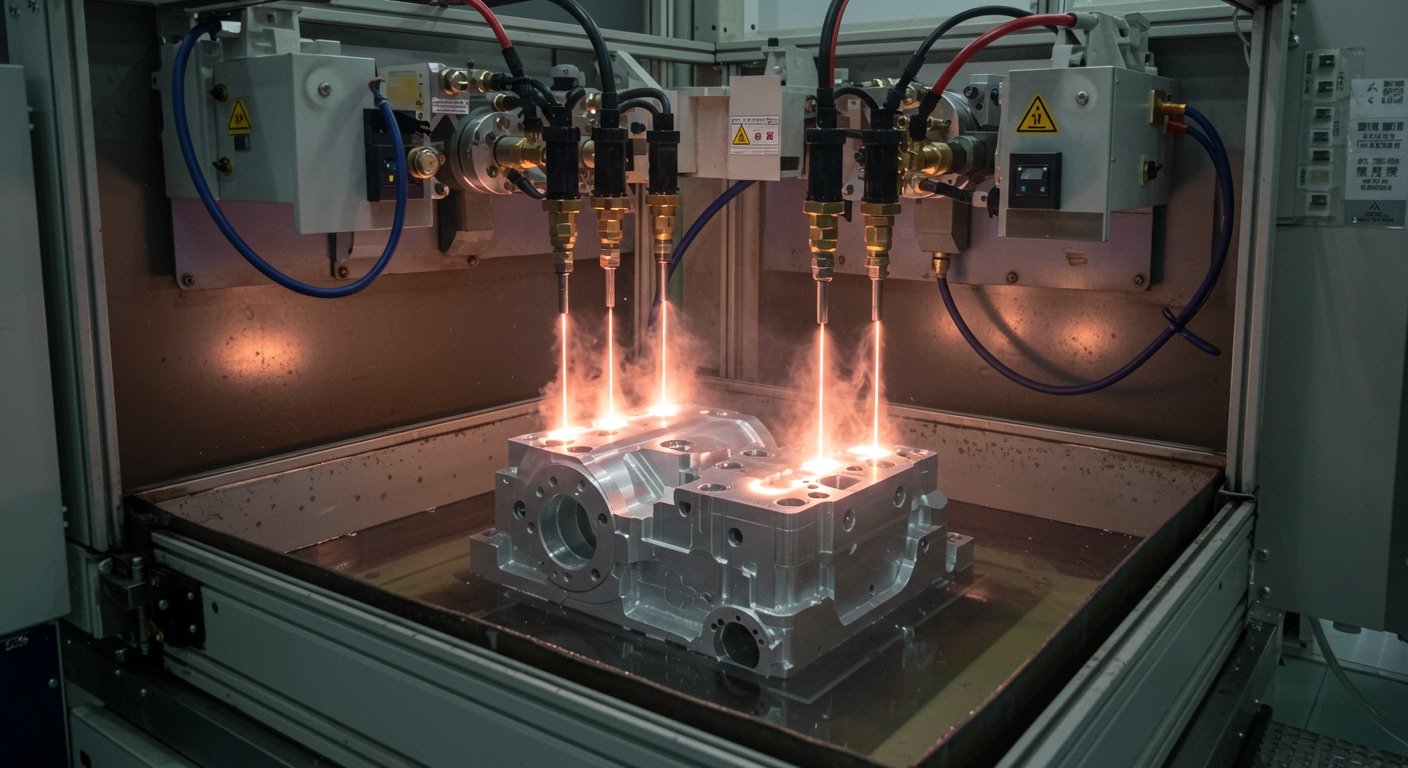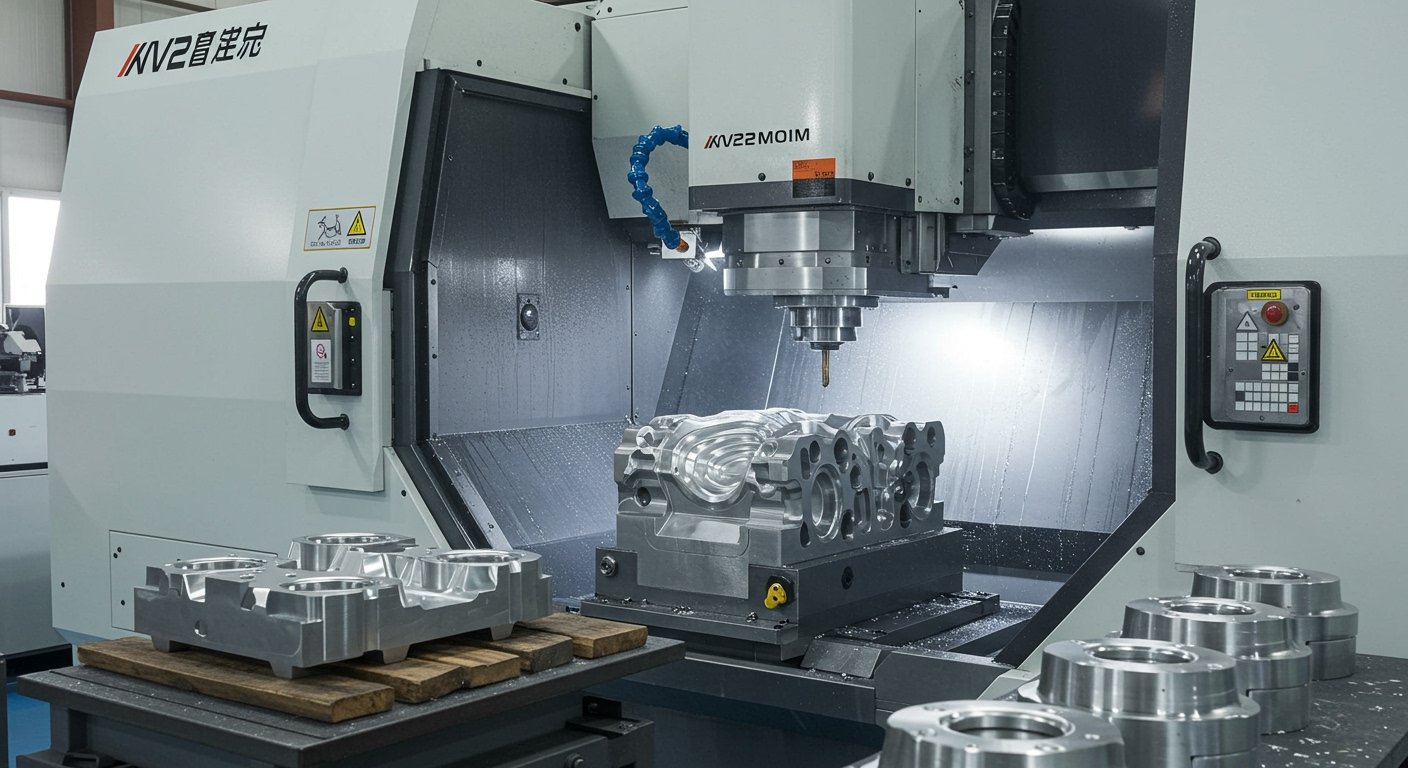Micro-Arc Oxidation (MAO) achieves food-grade oxidation by forming a dense, hard, and chemically inert ceramic layer on valve metals like aluminum and titanium, crucial for components produced via cnc machining. This process creates a highly adherent, non-porous surface that is resistant to corrosion, wear, and chemical degradation, preventing the leaching of harmful substances into food products. Its inherent biocompatibility and ability to meet stringent regulatory standards, such as FDA and EU food contact regulations, solidify its position as a preferred surface treatment for food-grade applications, ensuring both safety and longevity.
About the Article
- PAS Introduction: Micro-Arc Oxidation (MAO) for Food-Grade Surfaces
- Decoding Micro-Arc Oxidation (MAO) for Food-Grade Applications
- The Scientific Basis of Food-Grade Oxidation Attainment
- Implementing Food-Grade Oxidation in Precision CNC Machining
- Our Commitment to Excellence in Food-Grade Oxidation and CNC Machining
- Related Questions on Food-Grade Oxidation and CNC Machining
- Conclusion: Advancing Food Safety with Micro-Arc Oxidation and CNC Machining
In the demanding landscape of food processing and packaging, the integrity of materials is paramount. Components must not only withstand harsh operating environments but also ensure absolute safety for consumer products. We recognize the critical need for surfaces that are not merely durable but verifiably food-grade.
Conventional surface treatments often fall short, presenting risks of material degradation, particle shedding, or chemical leaching, which can compromise product safety and regulatory compliance. Such issues lead to costly operational downtimes, product recalls, and significant reputational damage within the industry.
At ly-machining, our experience has shown that Micro-Arc Oxidation (MAO) offers a robust and verifiable solution to these challenges. This advanced surface treatment, particularly for parts produced through precision cnc machining, elevates material performance to meet stringent food-grade oxidation requirements, ensuring both operational reliability and consumer safety.
Decoding Micro-Arc Oxidation (MAO) for Food-Grade Applications
From our perspective in Shenzhen, serving global clients, understanding the fundamental principles of Micro-Arc Oxidation (MAO) is crucial, especially when aiming for food-grade oxidation. This process transforms the surface of certain metals into a highly protective ceramic layer.
The Fundamental Process of Micro-Arc Oxidation and its Food-Grade Relevance
Micro-Arc Oxidation, also known as Plasma Electrolytic Oxidation (PEO), is an electrochemical surface treatment that involves immersing a valve metal (such as aluminum, titanium, or magnesium) in an electrolyte bath. We apply a high-voltage pulse, initiating micro-discharges on the metal surface.
These micro-discharges generate plasma, leading to rapid local heating and cooling that transforms the metal surface into a dense, hard, and crystalline ceramic oxide layer. This layer is an integral part of the substrate, ensuring superior adhesion and preventing flaking, a critical aspect for any food-grade oxidation.

Material Selection and CNC Machining Compatibility for Food-Grade Oxidation
The efficacy of food-grade oxidation via MAO is highly dependent on the base material. Our focus at ly-machining is often on aluminum alloys and titanium, which are frequently processed using cnc machining. These materials are inherently suitable for MAO.
Aluminum, with its excellent strength-to-weight ratio and corrosion resistance, benefits immensely from MAO, enhancing its surface hardness and wear resistance without compromising its core properties. Titanium, known for its biocompatibility and high strength, becomes even more robust and inert after undergoing food-grade oxidation.
We ensure that the initial cnc machining process leaves a surface finish optimized for MAO, as surface quality directly impacts the uniformity and integrity of the food-grade oxidation layer. (This pre-treatment step is critical for layer consistency).
The Scientific Basis of Food-Grade Oxidation Attainment
Achieving true food-grade oxidation is not merely about applying a coating; it involves a scientific understanding of surface chemistry and structural integrity. Our methodologies are rooted in these principles to deliver compliant solutions.
Enhancing Surface Properties for Food-Grade Oxidation: Density and Adhesion
The ceramic layer formed by MAO for food-grade oxidation is characterized by its high density and exceptional adhesion to the substrate. Unlike deposited coatings, the MAO layer grows *into* and *from* the base metal.
This intrinsic bond eliminates the risk of delamination, which is paramount in food contact applications where any detached particles could contaminate products. The dense structure minimizes porosity, effectively sealing the underlying metal and preventing the migration of metallic ions.
We meticulously control process parameters (current density, voltage, electrolyte composition) to optimize these properties, ensuring a consistent and impenetrable food-grade surface for every cnc machined part.

Navigating Regulatory Compliance for Food-Grade Oxidation Standards
Meeting food safety regulations is non-negotiable. Our approach to food-grade oxidation with MAO specifically addresses the requirements set by authorities like the FDA (U.S. Food and Drug Administration) and the European Union’s food contact material regulations.
MAO layers, particularly on aluminum and titanium, are inert and non-toxic, preventing interaction with food products. We conduct rigorous testing for extractable substances and ensure compliance with migration limits, providing the necessary documentation for our clients.
Our expertise ensures that components, whether for processing equipment or packaging, will pass stringent inspections, minimizing regulatory hurdles for our partners. (Compliance is a continuous focus for us).
Superior Corrosion and Wear Resistance through Food-Grade Oxidation
The operational environments in food processing often involve exposure to aggressive cleaning agents, fluctuating temperatures, and abrasive contact. Food-grade oxidation via MAO significantly enhances the resistance to these challenges.
The ceramic layer exhibits extraordinary hardness, typically ranging from 800-2000 HV, which vastly improves wear resistance compared to the base metal. This extended durability translates to a longer service life for cnc machined parts.
Furthermore, the MAO layer provides exceptional corrosion resistance, protecting the substrate from chemical attack and ensuring the longevity and hygiene of equipment. This dual protection is a hallmark of effective food-grade oxidation.
| Feature / Treatment | Micro-Arc Oxidation (MAO) | Anodizing (Type II/III) | Electropolishing | Food-Grade Relevance |
|---|---|---|---|---|
| Layer Hardness | Very High (800-2000 HV) | Moderate (300-600 HV) | Low (base metal) | Excellent wear/scratch resistance for food contact. |
| Corrosion Resist. | Excellent | Good to Excellent | Good | Prevents material degradation and contamination. |
| Adhesion | Integral bond | Good (porous) | Surface smoothing | No delamination risk, crucial for safety. |
| Surface Finish | Rougher, ceramic | Smoother, often dyed | Very Smooth | Reduces bacterial adhesion due to density, but surface texture can vary. |
| Substrate Scope | Al, Ti, Mg, Zr | Al alloys | Stainless Steels | Broad applicability for common cnc machining metals. |
| Food-Grade Comp. | High (inert, non-toxic) | Moderate to High (dye-dependent) | High (surface passivation) | Direct compliance through inertness and stability. |
Implementing Food-Grade Oxidation in Precision CNC Machining
The journey from a raw material to a food-grade component is intricate, particularly when precision cnc machining is involved. We understand the synergy required between machining and surface treatment.
Optimizing CNC Machining Outputs for Flawless Food-Grade Oxidation Surfaces
The initial quality of cnc machined parts directly influences the success of food-grade oxidation. Surface defects, residual stresses, or improper tool marks can lead to inconsistencies in the MAO layer.
At ly-machining, our engineers work closely with clients to define machining parameters that yield optimal surface finishes and dimensional accuracy. We employ advanced cnc machining techniques to ensure that components are perfectly prepared for the MAO process.
This meticulous attention to pre-treatment ensures a uniform and high-performance food-grade oxidation layer, which is critical for reliability and regulatory compliance. (Our integrated approach minimizes risks).

Addressing Practical Challenges in Achieving Consistent Food-Grade Oxidation Quality
Maintaining consistent quality in food-grade oxidation, especially for diverse cnc machined components, presents several challenges. These include ensuring uniform layer thickness across complex geometries and controlling process variability.
We address these by employing automated process control systems, precise electrolyte management, and experienced technicians who monitor every stage. Our quality assurance protocols include non-destructive testing and microscopic analysis of the MAO layers.
From a delivery standpoint, our robust production planning and integrated cnc machining and MAO capabilities allow us to meet demanding deadlines without compromising the stringent quality required for food-grade oxidation.
Sustaining Performance: The Long-Term Benefits of Food-Grade Oxidation
Investing in food-grade oxidation for cnc machined parts yields significant long-term benefits beyond initial compliance. The enhanced durability and inertness contribute to a lower total cost of ownership.
Reduced wear and corrosion mean fewer replacements and maintenance interventions, extending the operational life of equipment in food contact applications. This translates into greater efficiency and reduced environmental impact.
Moreover, the stable nature of the MAO layer ensures that the food-grade properties are retained over extended periods, providing sustained safety and performance. (This durability offers a significant advantage).
Our Commitment to Excellence in Food-Grade Oxidation and CNC Machining
At ly-machining, based in Shenzhen, our commitment extends beyond simply providing a service. We partner with our clients to deliver solutions that embody precision, reliability, and adherence to the highest standards.
Our comprehensive capabilities in advanced cnc machining combined with our specialized expertise in Micro-Arc Oxidation for food-grade applications position us as a trusted supplier. We understand the specific demands of industries where food safety is paramount.
We offer full traceability of materials and processes, robust quality control systems, and a dedicated technical team ready to support your most complex projects. Our goal is to ensure your components not only meet but exceed expectations for food-grade oxidation.
Related Questions on Food-Grade Oxidation and CNC Machining
1. What specific materials are best suited for Micro-Arc Oxidation to achieve food-grade status?
Answer: While Micro-Arc Oxidation (MAO) can be applied to various valve metals, aluminum alloys (e.g., 6061, 7075), titanium alloys (e.g., Ti-6Al-4V), and to a lesser extent, magnesium alloys, are most commonly used for food-grade oxidation. These materials, often precision-engineered via cnc machining, are favored due to their inherent strength, lightweight properties, and the ability of MAO to form a highly stable, inert, and non-toxic ceramic layer on their surfaces, meeting stringent food contact requirements.
2. How does the Micro-Arc Oxidation process ensure that no harmful substances leach into food products?
Answer: The MAO process ensures no harmful leaching by creating a dense, highly adherent, and chemically inert ceramic oxide layer on the metal substrate. This layer acts as an effective barrier, preventing the underlying metal from direct contact with food and beverages. The ceramic itself is composed of stable, non-toxic oxides (e.g., aluminum oxide, titanium dioxide) that do not degrade or release harmful particles or ions, a crucial aspect of food-grade oxidation compliance, especially for parts derived from meticulous cnc machining.
3. What are the key quality control measures for food-grade oxidation on cnc machined components?
Answer: Key quality control measures for food-grade oxidation on cnc machined components include rigorous pre-treatment inspection to ensure optimal surface finish and cleanliness from cnc machining. During MAO, process parameters such as voltage, current density, and electrolyte composition are precisely monitored and controlled. Post-treatment, we conduct comprehensive evaluations including layer thickness measurement, adhesion testing (e.g., scratch testing), porosity assessment, and surface morphology analysis. For food-grade compliance, independent third-party testing for extractable substances and migration limits is also regularly performed to verify the safety and inertness of the food-grade oxidation layer.
Advancing Food Safety with Micro-Arc Oxidation and CNC Machining
The demand for high-performance, safe, and compliant materials in food-contact applications will only continue to grow. Micro-Arc Oxidation stands as a superior solution, offering unparalleled durability, corrosion resistance, and verified food-grade properties.
At ly-machining in Shenzhen, our integrated approach, combining precision cnc machining with advanced MAO capabilities, enables us to provide components that not only meet but exceed these stringent industry requirements. We are dedicated to ensuring the integrity and safety of your products through our expertise in food-grade oxidation.
We invite you to partner with us to explore how our specialized services can enhance your applications, ensuring long-term reliability and peace of mind. (Contact us today to discuss your specific food-grade component needs).

